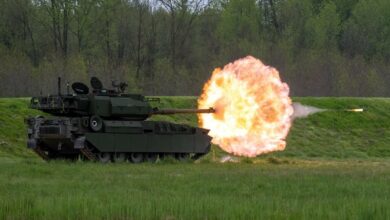US Army Test-Fires Patriot Interceptor From THAAD Air Defense System
Lockheed Martin, the Missile Defense Agency, and the US Army test-fired the PAC-3 Missile Segment Enhancement (MSE) interceptor with the THAAD Weapon System, demonstrating further integration.
The latest variant of the Patriot surface-to-air missile intercepted a ballistic missile target during the test without a Patriot fire unit, “yielding greater flexibility for the warfighter.”
Last month, a THAAD-fired PAC-3 MSE intercepted a simulated target. In 2020, it knocked off a target using THAAD-provided data.
The THAAD Weapon System launched PAC-3 MSE and intercepted a tactical ballistic missile target in a flight test today. This integration demonstrates a new, layered defense capability against advanced threats. Read more.
— Lockheed Martin News (@LMNews) March 29, 2022
The Two Systems
The Patriot is the army’s “regional air and missile defense system,” with a PAC 3 range of 12 miles (20 kilometers), PAC 2 range of 60-99 miles (96-160 kilometers), and a PAC-3 MSE range of 22 miles (35 kilometers).
The tests demonstrated the successful integration of the PAC-3 missile interceptor with the THAAD or Terminal High Altitude Area Defense, which is the “only US system designed for endo-and exo-battlespace.”
According to Defense News, the Lockheed Martin system “provides defensive capability in the terminal — or final — phase of a threat missile’s flight,” with a range of 200 kilometers (124 miles).
Integration Effort
Lockheed Martin vice president Scott Arnold told the outlet, “With this successful demonstration, the Patriot M903 Launching Stations and PAC-3 MSE interceptors can be deployed with the THAAD Weapon System using only the THAAD radar and TFCC (Fire Control & Communication) for support.”
The army has been trying to integrate the two systems to establish a more effective and layered air and missile defense (AMD) capability.
The PAC-3 has also been launched from the army’s Integrated Air and Missile Defense Battle Command System (IBCS), which will replace the Patriot in the long term as the army’s main AMD system. Northrop Grumman is contracted to deliver up to 160 IBCS units to the army by 2026.












